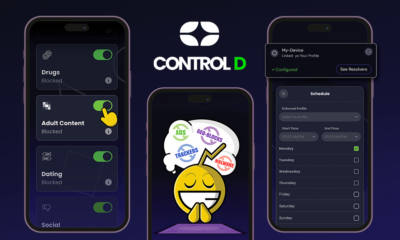TECHNOLOGY
Which Metric is More Valuable for Your Business?

Real-Time Data or Delayed Insights: Which Metric is More Valuable for Your Business?
Which would you say is a better option: Having immediate access to information, or waiting a week, a month, or maybe even a whole year?
Do you want to know what is happening to your business as it happens, or long after it has affected you and your team?
While there is value in analyzing information later to get a more comprehensive picture, there is far more value in knowing what is happening as it happens, to make quick decisions based on information fully accessible in the moment! Fortunately, this possibility is becoming more likely, thanks to the rapid acceleration of real-time data collected via Edge Computing!
Real-time data refers to information delivered promptly to users immediately after collection. In today’s digital landscape, mere access to real-time data is insufficient; its effective utilization is crucial in all aspects of business processes to maintain competitiveness and foster an anticipatory approach. Consequently, businesses must transform into real-time organizations to leverage the benefits of real-time data access.

We live in the present, which is where the benefit of real-time data collection and application occurs. This means organizations can shift to operating in real time by analyzing data-driven insights now to leverage them in many ways. These include delivering better customer service, turning around their inventory, and most importantly, better anticipating challenges and disruptions in the marketplace before they occur — a cornerstone to my Hard Trend Methodology and pre-solving problems.
Use Real-Time Data for a Better Customer Experience
Why, exactly, should your organization or any others in a specific industry become real-time organizations?
Certainly, nobody ever expresses gratitude for experiencing headaches, nor do they dismiss the importance of effective communication with customers. Proactively addressing issues before they escalate is the wiser approach, preventing setbacks that may arise. This becomes even more achievable when you possess complete access to data, streamlining the process of problem-solving.
A logistics company can strategize new routes before a winter storm hits, and still make their deadlines. A retailer can identify items that are in short supply before stock runs out. A financial advisor can day-trade based on up-to-date information for better results. A manufacturer can diagnose potential machine failures before they cause downtime and missed deadlines.
No matter the industry, the goal with real-time data is a customer-focused one, first and foremost. Because your processes will be efficient and more immediate in delivering results of any kind, your customers will in turn be happier. Essentially, instead of being proactive in solving a problem after it disrupts you, you are being pre-active in solving future events!
Generate Sales with Real-Time Data
How about connecting with potential sales leads or new customers? The data that a real-time organization collects provides enough up-to-date information on demand to facilitate a more effective marketing and sales team.

At its core, “sales” means locating customers’ needs and interests, and leveraging them to introduce them to a product or service that satiates those needs and interests. Recent studies show that the human attention span is around 8 seconds, but you’d better believe that, with the immediacy of digital connectivity, a Hard Trend future certainty is that it will get shorter.
Therefore, sales and marketing strategies are most effective when needs and interests are addressed with a level of immediacy.
Examples in our world today include everything from YouTube offering related videos based on what a viewer just watched, all the way to retail sites like Amazon giving users suggestions on related products, based on what they just put in your cart. How can this concept be leveraged for your organization and industry?
When you anticipate customer needs as they occur, you are meeting that immediacy your customers have with a better, more immediate, experience.
The Cross-Section of Automation and Real-Time Analytics
As essential as real-time data and analytics are to the health and success of organizations, they may appear to be difficult to implement, especially if you are in a more niche industry, or are a B2B company.
For starters, the sheer amount of data that can be accumulated today is unfathomable to many, and, truth be told, not all of it is useful. It would take teams of dedicated data experts to analyze all the data that just one organization can collect, and by the time they give their findings to key decision-makers, it would no longer be real time.
Can we find a simple method to sort through this vast information and utilize it effectively?

Enter Continuous Intelligence (CI), an amalgamation of real-time analytics, machine learning, and automation. CI harnesses the power of Machine Learning (ML) and Artificial Intelligence (AI) to automatically process both historical and real-time data sets, providing actionable insights and recommendations. This transformative technology collaborates with you and your team, adopting an anticipatory approach.
As CI programs become more prominent, we are finding that they can be applied to any industry and any department for more informed actions. This includes supply chain companies, the manufacturing industry, healthcare, sales — you name it!
Let’s take the Wildlife Insights program from the Zoological Society of London and the World Wide Fund for Nature.
Wildlife Insights uses ML to analyze camera trap data for streamlined decisions to help wildlife. The technology raises alerts to potential poaching, identifies wildlife patterns and threats, and predicts population changes. With CI, Wildlife Insights is really changing the game for wildlife preservation.
The Real-Time Necessity
Arguably, there is evident high value in having market-based information available for all organizations looking to make the shift from being agile and reactionary to Anticipatory and, ultimately, a positive disruptor.
But turning your business into a real-time organization will not happen overnight. It is an evolutionary process that requires companies to be both agile and Anticipatory. The first step is to know your goals. Whether you want to enhance your brand, improve customer trust in your product or service, increase sales, or expand in general, you need to understand where you want to go.
Then, just start small. With the rapid acceleration of Software-as-a-Service (SaaS) and Everything-as-a-Service (XaaS), access to CI applications will become more prevalent so you can keep your focus on the human side of this digital revolution — implementing the analytics of data to achieve your goals.
With the increase in software applications like CI, ML, AI, and various autonomous technologies, plus the increasing datafication of all industries, the need to make informed decisions quickly will be essential to staying competitive as conditions can change in an instant.
The question has become: Can you afford not to become a real-time organization?
TECHNOLOGY
Next-gen chips, Amazon Q, and speedy S3

AWS re:Invent, which has been taking place from November 27 and runs to December 1, has had its usual plethora of announcements: a total of 21 at time of print.
Perhaps not surprisingly, given the huge potential impact of generative AI – ChatGPT officially turns one year old today – a lot of focus has been on the AI side for AWS’ announcements, including a major partnership inked with NVIDIA across infrastructure, software, and services.
Yet there has been plenty more announced at the Las Vegas jamboree besides. Here, CloudTech rounds up the best of the rest:
Next-generation chips
This was the other major AI-focused announcement at re:Invent: the launch of two new chips, AWS Graviton4 and AWS Trainium2, for training and running AI and machine learning (ML) models, among other customer workloads. Graviton4 shapes up against its predecessor with 30% better compute performance, 50% more cores and 75% more memory bandwidth, while Trainium2 delivers up to four times faster training than before and will be able to be deployed in EC2 UltraClusters of up to 100,000 chips.
The EC2 UltraClusters are designed to ‘deliver the highest performance, most energy efficient AI model training infrastructure in the cloud’, as AWS puts it. With it, customers will be able to train large language models in ‘a fraction of the time’, as well as double energy efficiency.
As ever, AWS offers customers who are already utilising these tools. Databricks, Epic and SAP are among the companies cited as using the new AWS-designed chips.
Zero-ETL integrations
AWS announced new Amazon Aurora PostgreSQL, Amazon DynamoDB, and Amazon Relational Database Services (Amazon RDS) for MySQL integrations with Amazon Redshift, AWS’ cloud data warehouse. The zero-ETL integrations – eliminating the need to build ETL (extract, transform, load) data pipelines – make it easier to connect and analyse transactional data across various relational and non-relational databases in Amazon Redshift.
A simple example of how zero-ETL functions can be seen is in a hypothetical company which stores transactional data – time of transaction, items bought, where the transaction occurred – in a relational database, but use another analytics tool to analyse data in a non-relational database. To connect it all up, companies would previously have to construct ETL data pipelines which are a time and money sink.
The latest integrations “build on AWS’s zero-ETL foundation… so customers can quickly and easily connect all of their data, no matter where it lives,” the company said.
Amazon S3 Express One Zone
AWS announced the general availability of Amazon S3 Express One Zone, a new storage class purpose-built for customers’ most frequently-accessed data. Data access speed is up to 10 times faster and request costs up to 50% lower than standard S3. Companies can also opt to collocate their Amazon S3 Express One Zone data in the same availability zone as their compute resources.
Companies and partners who are using Amazon S3 Express One Zone include ChaosSearch, Cloudera, and Pinterest.
Amazon Q
A new product, and an interesting pivot, again with generative AI at its core. Amazon Q was announced as a ‘new type of generative AI-powered assistant’ which can be tailored to a customer’s business. “Customers can get fast, relevant answers to pressing questions, generate content, and take actions – all informed by a customer’s information repositories, code, and enterprise systems,” AWS added. The service also can assist companies building on AWS, as well as companies using AWS applications for business intelligence, contact centres, and supply chain management.
Customers cited as early adopters include Accenture, BMW and Wunderkind.
Want to learn more about cybersecurity and the cloud from industry leaders? Check out Cyber Security & Cloud Expo taking place in Amsterdam, California, and London. Explore other upcoming enterprise technology events and webinars powered by TechForge here.
TECHNOLOGY
HCLTech and Cisco create collaborative hybrid workplaces

Digital comms specialist Cisco and global tech firm HCLTech have teamed up to launch Meeting-Rooms-as-a-Service (MRaaS).
Available on a subscription model, this solution modernises legacy meeting rooms and enables users to join meetings from any meeting solution provider using Webex devices.
The MRaaS solution helps enterprises simplify the design, implementation and maintenance of integrated meeting rooms, enabling seamless collaboration for their globally distributed hybrid workforces.
Rakshit Ghura, senior VP and Global head of digital workplace services, HCLTech, said: “MRaaS combines our consulting and managed services expertise with Cisco’s proficiency in Webex devices to change the way employees conceptualise, organise and interact in a collaborative environment for a modern hybrid work model.
“The common vision of our partnership is to elevate the collaboration experience at work and drive productivity through modern meeting rooms.”
Alexandra Zagury, VP of partner managed and as-a-Service Sales at Cisco, said: “Our partnership with HCLTech helps our clients transform their offices through cost-effective managed services that support the ongoing evolution of workspaces.
“As we reimagine the modern office, we are making it easier to support collaboration and productivity among workers, whether they are in the office or elsewhere.”
Cisco’s Webex collaboration devices harness the power of artificial intelligence to offer intuitive, seamless collaboration experiences, enabling meeting rooms with smart features such as meeting zones, intelligent people framing, optimised attendee audio and background noise removal, among others.
Want to learn more about cybersecurity and the cloud from industry leaders? Check out Cyber Security & Cloud Expo taking place in Amsterdam, California, and London. Explore other upcoming enterprise technology events and webinars powered by TechForge here.
TECHNOLOGY
Canonical releases low-touch private cloud MicroCloud

Canonical has announced the general availability of MicroCloud, a low-touch, open source cloud solution. MicroCloud is part of Canonical’s growing cloud infrastructure portfolio.
It is purpose-built for scalable clusters and edge deployments for all types of enterprises. It is designed with simplicity, security and automation in mind, minimising the time and effort to both deploy and maintain it. Conveniently, enterprise support for MicroCloud is offered as part of Canonical’s Ubuntu Pro subscription, with several support tiers available, and priced per node.
MicroClouds are optimised for repeatable and reliable remote deployments. A single command initiates the orchestration and clustering of various components with minimal involvement by the user, resulting in a fully functional cloud within minutes. This simplified deployment process significantly reduces the barrier to entry, putting a production-grade cloud at everyone’s fingertips.
Juan Manuel Ventura, head of architectures & technologies at Spindox, said: “Cloud computing is not only about technology, it’s the beating heart of any modern industrial transformation, driving agility and innovation. Our mission is to provide our customers with the most effective ways to innovate and bring value; having a complexity-free cloud infrastructure is one important piece of that puzzle. With MicroCloud, the focus shifts away from struggling with cloud operations to solving real business challenges” says
In addition to seamless deployment, MicroCloud prioritises security and ease of maintenance. All MicroCloud components are built with strict confinement for increased security, with over-the-air transactional updates that preserve data and roll back on errors automatically. Upgrades to newer versions are handled automatically and without downtime, with the mechanisms to hold or schedule them as needed.
With this approach, MicroCloud caters to both on-premise clouds but also edge deployments at remote locations, allowing organisations to use the same infrastructure primitives and services wherever they are needed. It is suitable for business-in-branch office locations or industrial use inside a factory, as well as distributed locations where the focus is on replicability and unattended operations.
Cedric Gegout, VP of product at Canonical, said: “As data becomes more distributed, the infrastructure has to follow. Cloud computing is now distributed, spanning across data centres, far and near edge computing appliances. MicroCloud is our answer to that.
“By packaging known infrastructure primitives in a portable and unattended way, we are delivering a simpler, more prescriptive cloud experience that makes zero-ops a reality for many Industries.“
MicroCloud’s lightweight architecture makes it usable on both commodity and high-end hardware, with several ways to further reduce its footprint depending on your workload needs. In addition to the standard Ubuntu Server or Desktop, MicroClouds can be run on Ubuntu Core – a lightweight OS optimised for the edge. With Ubuntu Core, MicroClouds are a perfect solution for far-edge locations with limited computing capabilities. Users can choose to run their workloads using Kubernetes or via system containers. System containers based on LXD behave similarly to traditional VMs but consume fewer resources while providing bare-metal performance.
Coupled with Canonical’s Ubuntu Pro + Support subscription, MicroCloud users can benefit from an enterprise-grade open source cloud solution that is fully supported and with better economics. An Ubuntu Pro subscription offers security maintenance for the broadest collection of open-source software available from a single vendor today. It covers over 30k packages with a consistent security maintenance commitment, and additional features such as kernel livepatch, systems management at scale, certified compliance and hardening profiles enabling easy adoption for enterprises. With per-node pricing and no hidden fees, customers can rest assured that their environment is secure and supported without the expensive price tag typically associated with cloud solutions.
Want to learn more about cybersecurity and the cloud from industry leaders? Check out Cyber Security & Cloud Expo taking place in Amsterdam, California, and London. Explore other upcoming enterprise technology events and webinars powered by TechForge here.
-

 WORDPRESS7 days ago
WORDPRESS7 days ago13 Best HubSpot Alternatives for 2024 (Free + Paid)
-

 MARKETING6 days ago
MARKETING6 days agoAdvertising in local markets: A playbook for success
-

 SEARCHENGINES6 days ago
SEARCHENGINES6 days agoGoogle Core Update Flux, AdSense Ad Intent, California Link Tax & More
-

 SEARCHENGINES5 days ago
SEARCHENGINES5 days agoGoogle Needs Very Few Links To Rank Pages; Links Are Less Important
-

 MARKETING6 days ago
MARKETING6 days agoHow to Use AI For a More Effective Social Media Strategy, According to Ross Simmonds
-

 SEO5 days ago
SEO5 days agoHow to Become an SEO Lead (10 Tips That Advanced My Career)
-

 PPC4 days ago
PPC4 days ago10 Most Effective Franchise Marketing Strategies
-

 SEARCHENGINES3 days ago
SEARCHENGINES3 days agoGoogle Won’t Change The 301 Signals For Ranking & SEO














